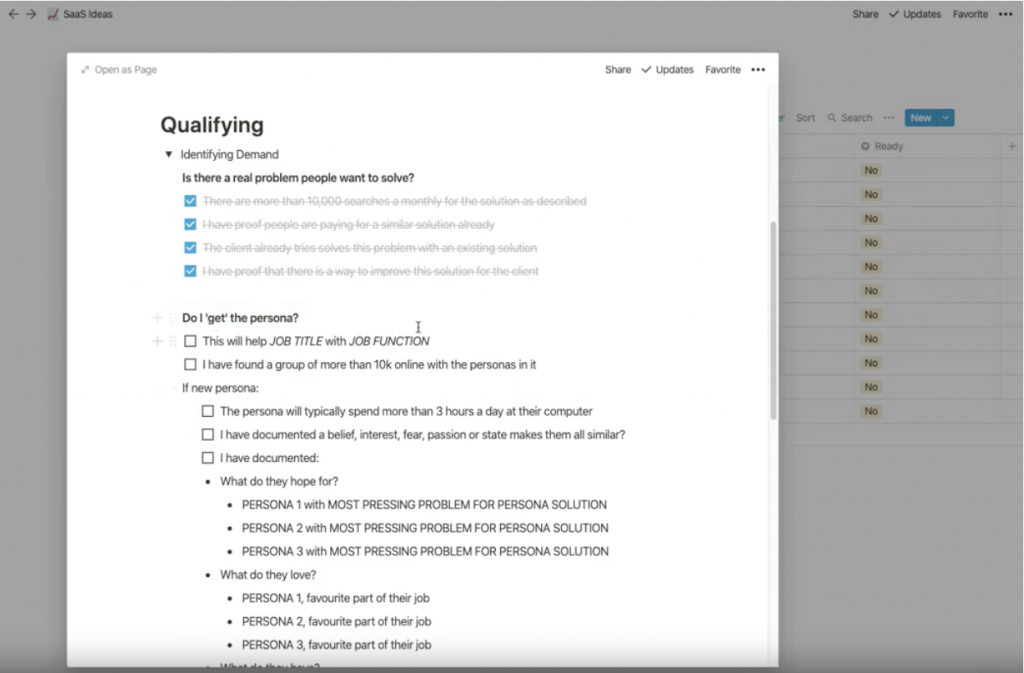At this point, your goal should be to create a business that fits to the lifestyle that you want, rather than diving into any business and finding you’ve created a life that you hate.
Having set clear goals in light of your Ideal Average Day, you will be well positioned to narrow down business opportunities to those that align with how you want to live. To simplify this process you should create what I (and others) refer to as a Validation Checklist.
This checklist is simply a quality assurance process to ensure that you get the results that you want. It should cover criteria for both:
- a viable business
- a business in line with your Ideal Average Day

Why you need a validation checklist
The main reason is obviously prioritisation.
You have limited time and resources. Having a checklist keeps you jumping from idea to idea saving you both time and resources. It does this by both invalidating ideas and showing you, you already have something worth working on if you’ve already got started.
most of the ideas you come across, because they don’t fit into your ideal average day.
What should be in your validation checklist
Whenever you come up with or stumble upon an interesting opportunity, before you consider taking it on, you need to run it through your validation checklist – this is especially true for those of you who are inclined to think “I can make it over a weekend and just see what happens”. You’ll waste the most time because you’ll never commit to one idea and see it through to completion